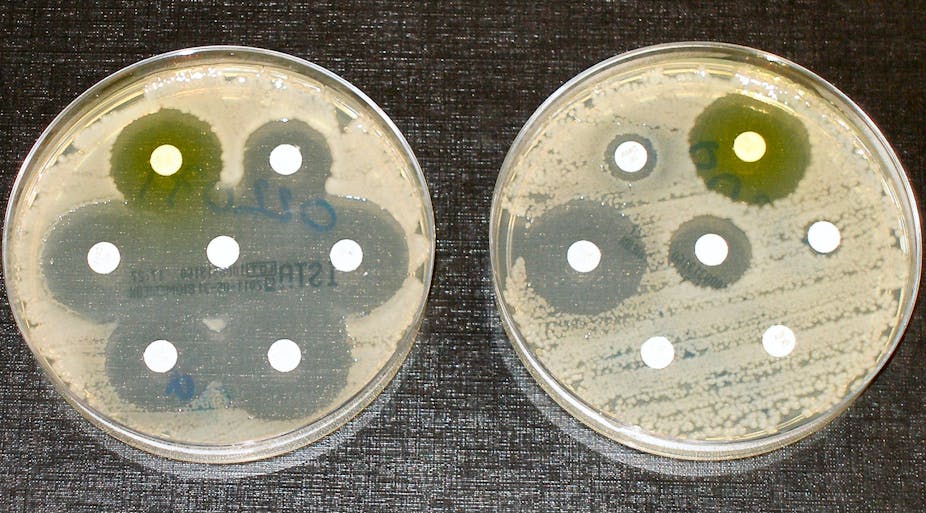Bacteria-eating viruses that kill the hospital superbug C. difficile have been isolated by scientists. The use of these kinds of viruses, known as phages, to tackle bacterial infection was employed before the advent of antibiotics. And now the technique is being used in the fight against superbugs that are antibiotic-resistant.
A team at Leicester University announced they had found 26 different viruses that infected most strains of C. difficile that were found in hospitals and clinical settings. C. difficile is highly infectious and was responsible for 1,646 deaths in the UK alone last year. In the US, about 14,000 people die each year and some 250,000 succumb to this infection.
So-called phage therapy provides an alternative to antibiotic treatment. And similar techniques could be developed to treat other antibiotic-resistant superbugs such as MRSA, said research lead, Martha Clokie.
“Ever since the discovery penicillin, antibiotics have been heralded as the ‘silver bullets’ of medicine. They have saved countless lives and impacted on the well-being of humanity,” she said.
“But less than a century following their discovery, the future impact of antibiotics is dwindling at a pace that no-one anticipated, with more and more bacteria outsmarting and evolving to dodge these miracle drugs.”
Unlike antibiotics, phages are very specific and will only infect one particular species or strain of bacteria, Clokie said. They hijack bacteria and inject their DNA into it. The phage then replicates many times causing the bacterial cell to burst open, which on release from the dead bacterium then go on to infect other bacteria cells.
The first step was to isolate a broad spectrum of phage viruses and select those that were most effective at killing highly virulent and prevalent strains of C. difficile. The team is now developing the treatment with a commercial company to find the most potent combination of phages; the fewest number of viruses with the widest killing spectrum.
The therapeutic potential of phage therapy has been known for almost a century. But Peter Mullany, professor of molecular microbiology at UCL, said it was largely neglected in the west in favour of research and development into new antibiotics. Much of research and use of phage therapy in the 20th century was carried out in the former USSR, Poland and India.
Although it was difficult to be more specific without detail, Mullaney said, there was huge potential to revisit phage therapy. “There are many advantages of treating bacterial infections with phage; phage continually replicate themselves until all the bacteria are removed, so in theory only one dose of phage would be required. Also phages do not damage the human host, as antibiotics sometimes do. However, like antibiotics, bacteria can develop resistance to phage, although treating with a cocktail can overcome this to some extent.”
While their non-specificity meant that one antibiotic targeted a whole range of bacteria living in the body, phages are so specific there is no chance of them harming other bacteria or cells that are beneficial to us.
Jim Bull, professor in molecular biology at the University of Texas at Austin, said: “The practicality of phage therapy has not been thoroughly researched, although it has been practised for over 70 years in some countries like Georgia. Some now classic experiments were performed in the UK in the 1980s that showed phage therapy could be effective in experimental and natural animal infection models, but those studies also showed that it sometimes failed.
"Phages which grow in the lab may not clear an infection - either because the bacterial strain is not sensitive to the phages being used or because the bacteria are able to avoid attack by hiding out. But I’m optimistic that this approach will result in many successes. Even if it is not 100% successful, the work is a necessary step in paving the way toward further improvements.”
“Phage therapy is an attractive alternative now that antibiotic resistance has rendered many of our wonder drugs useless.”

